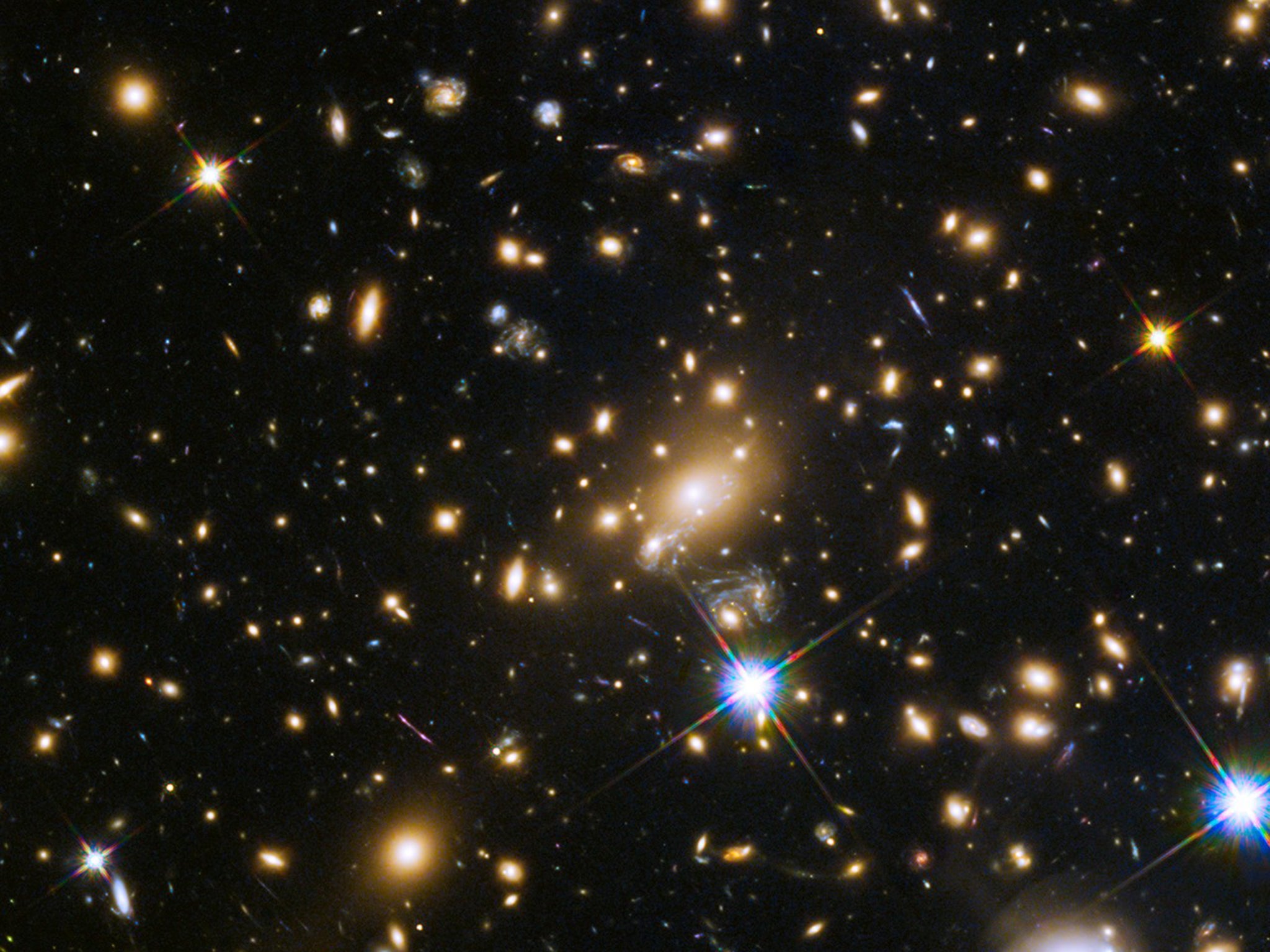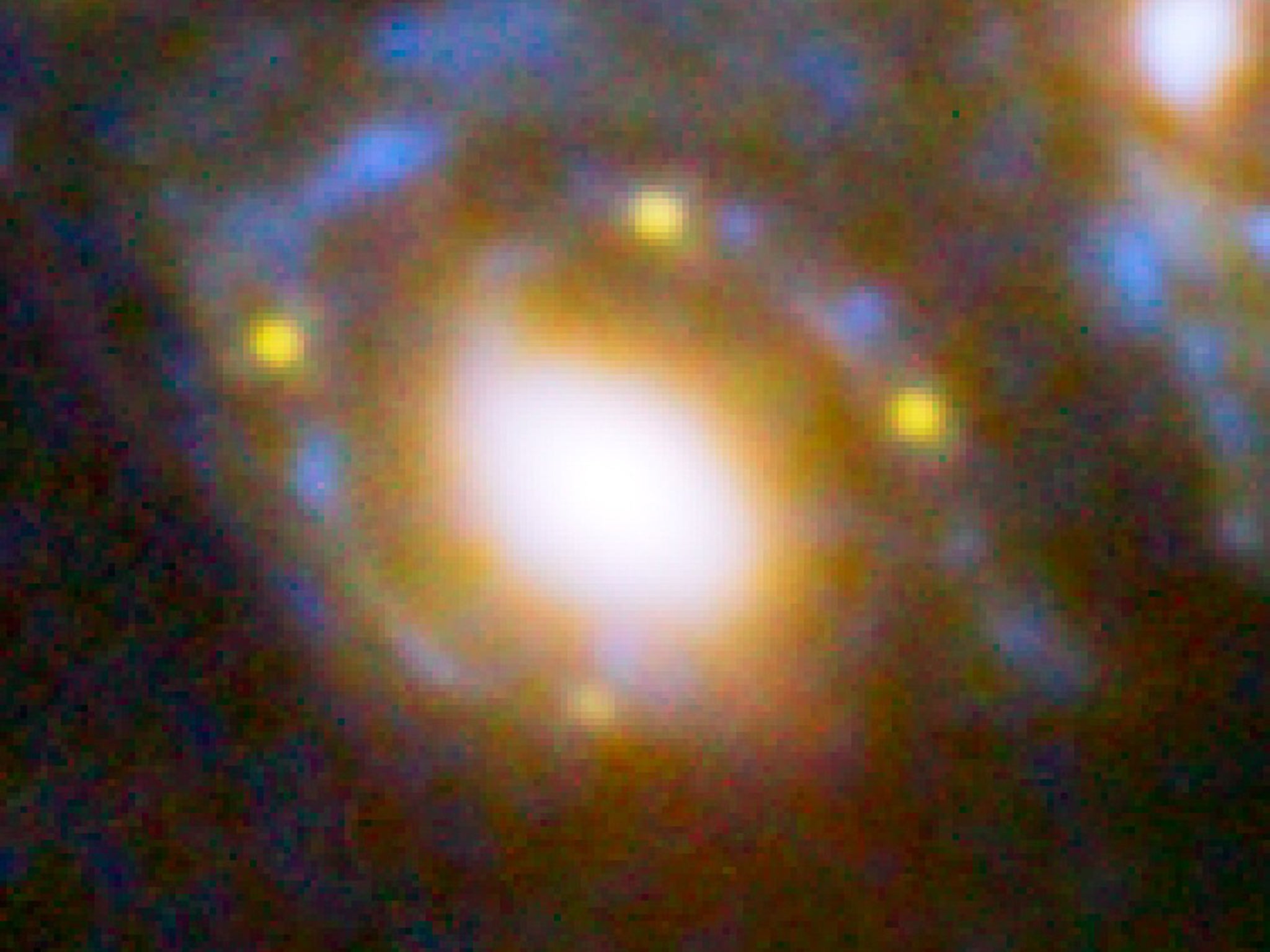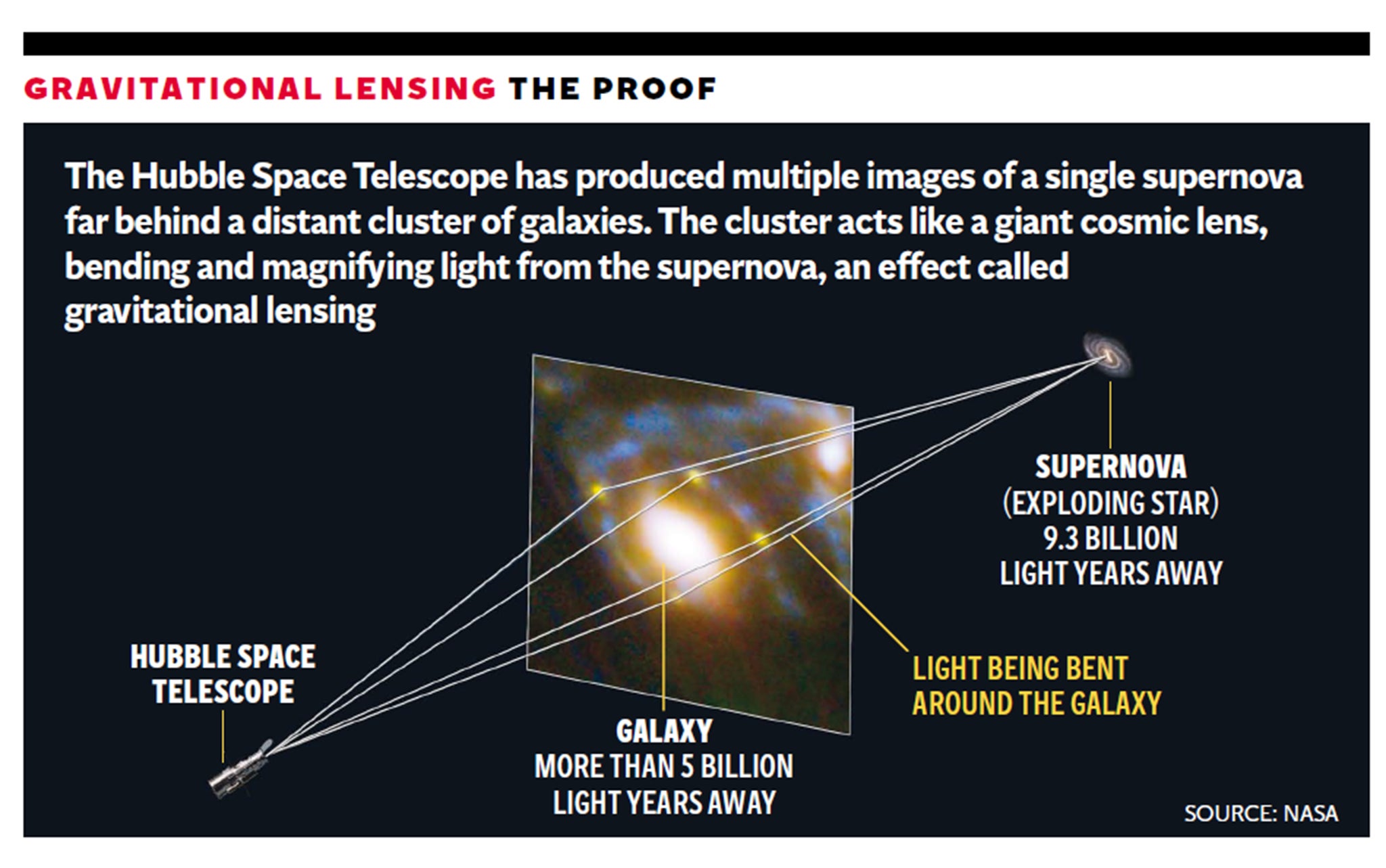Hubble Telescope confirms Einstein's theory of relativity
The picture that finally proves he was right

Stunning visual confirmation of Albert Einstein’s general theory of relativity has been provided by the Hubble Space Telescope, after astronomers captured the first images of light from an exploding star being distorted by a cluster of galaxies.
The world’s most famous scientist first predicted the effect more than a century ago and now, after 50 years of scanning the skies, it has finally been detected.
The photograph shows the tell-tale signature of four points of light, originating from a single supernova explosion, arranged in an “Einstein cross” around a distant galaxy cluster. The four spots are the result of a hidden mass of dark matter inside the galaxy bending the light from the supernova which is many light years away but falls directly behind it when viewed from Hubble.
Each of the four points of light take different paths through space and their travel times are affected by the amount of missing matter – the invisible dark matter that makes up most of the Universe – that they have to pass through on their journey, explained Patrick Kelly, of the University of California, Berkeley, who was part of the international team supported by the American and European space agencies, Nasa and ESA.

The effect is analogous to several trains leaving the same station at the same time but following different routes, some slower than others, to the same final destination, said Steve Rodney, of the Johns Hopkins University in Baltimore, one of the authors of the study published in the journal Science.
Einstein’s general theory of relativity predicts that dense concentrations of matter in the Universe will exert such a strong gravitational pull on light passing through it that light becomes bent just like a lens in a pair of spectacles.
Although the first gravitational lens was discovered in 1979, and they have subsequently been confirmed in objects such as galaxies and quasars, this is the first time one has been found for the intense light given off by a stellar explosion – in this case a supernova occurring 9.3 billion light years away.
Astronomers working on images collected by Hubble first saw four points of light arranged in a cross around a galaxy cluster 5 billion light years away on 11 November last year, and have since analysed the images with other ground-based telescopes on earth. The four supernova images captured by the Hubble appeared within a few days or weeks of one another. “It really threw me for a loop when I spotted the four images surrounding the galaxy – it was a complete surprise,” said Dr Kelly.

“Basically, we get to see the supernova four times and measure the time delays between its arrival in the different images, hopefully learning something about the supernova and the kind of star it exploded from, as well as about the gravitational lenses,” he said.
Join our commenting forum
Join thought-provoking conversations, follow other Independent readers and see their replies
Comments